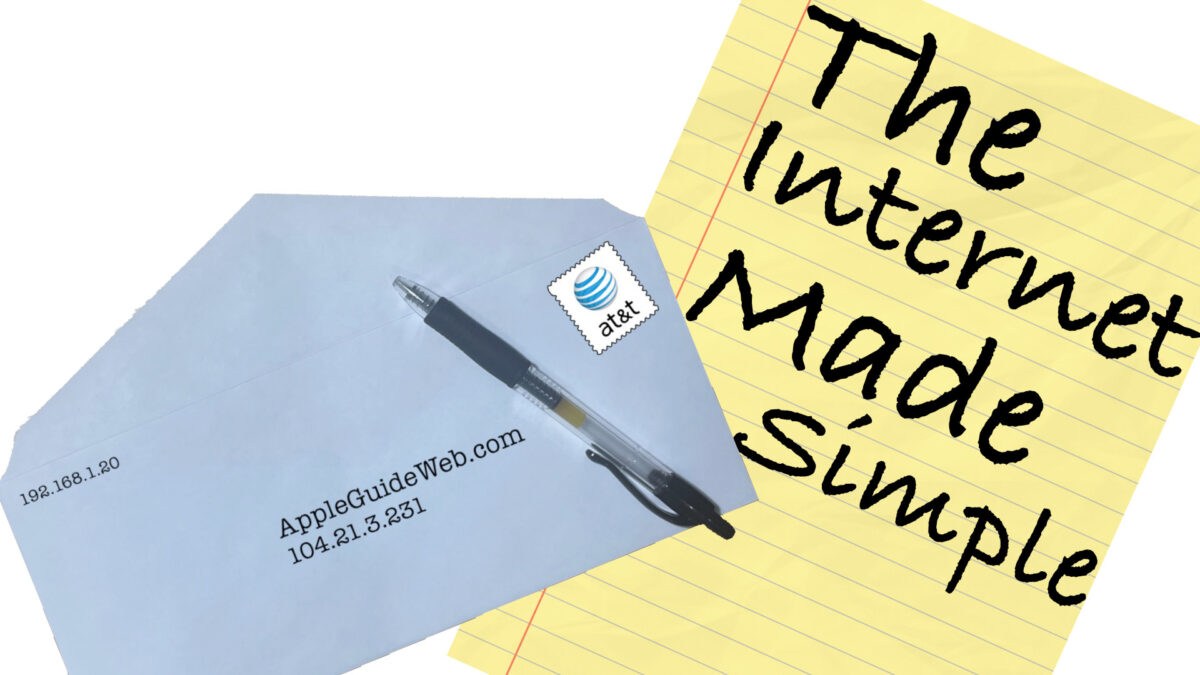On the surface, the internet may seem to be a complicated web of computers spread throughout the world, but as the end-user, you probably will never notice it. You just open your internet browser, type in your question or website you would like to visit, and bam, in a blink of an eye, you’re transported to that location. Now, you’re probably thinking that looking any further into this subject would go completely over your head. So, let’s simplify it and take an elementary look at how the internet works.
To examine this process, I will compare it to something you may be familiar with, the regular mail.
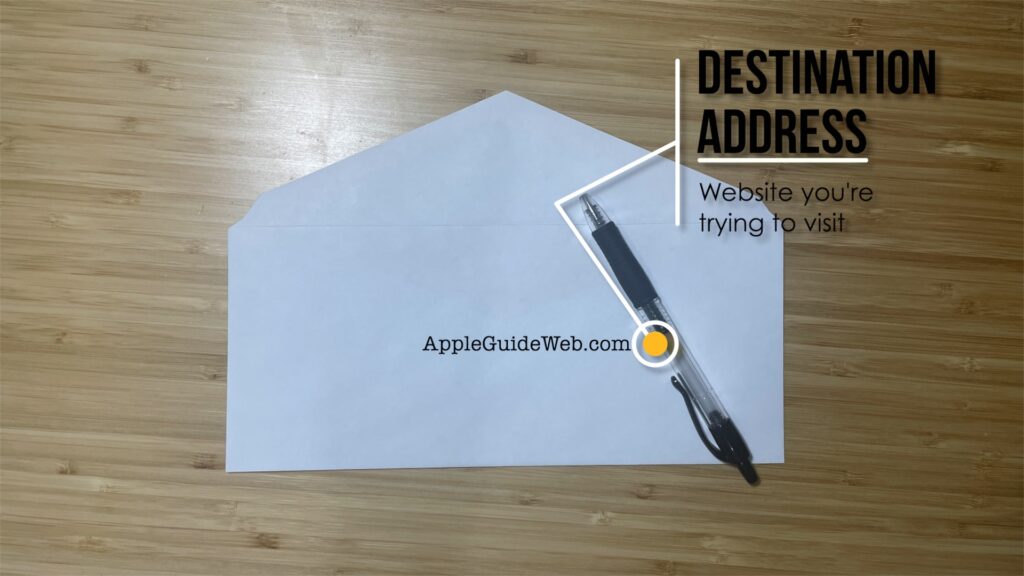
So, let’s say we want to go to AppleGuideWeb.com. In this case, that’s the name of the person we are sending the message to. Then, in the top left corner, we need to add our return address, in the form of a local IP address, like 192.168.1.20. This IP address is like a room number given to your device by your home router. Then, make sure you have pre-paid for stamps, a.k.a paid your internet bill. Finally, inside the envelope is what we are requesting from that site. Now, everything is ready to go except for one thing, the street address of AppleGuideWeb.com, AKA its IP address. For this, we are going to need help from the DNS.
The DNS, or domain name service, is like an address book. Throughout the World Wide Web, and even your home, there are address books that contain the names and addresses of every website.
First, your computer will check with your home router’s DNS to see if it knows where AppleGuideWeb.com is. Since AppleGuideWeb.com isn’t at your house, it’s not going to know where it is.
So, your home router will pass the question to your preferred DNS provider and see if it knows where AppleGuideWeb.com lives. It’s likely your network’s preferred DNS is your ISP, or internet service provider, like AT&T, Comcast, Spectrum, etc. Each of these companies has their own address book to look up addresses. Then, if it’s not there, they will forward it around until they find someone who does. But, somewhere in someone’s address book is the address of AppleGuideWeb.com.
It’s at this point that another technology is introduced, the CDN. A CDN, or content delivery network, helps a website in three distinct ways.

One, it brings the website closer to the visitor. For example, it would be very inefficient for AppleGuideWeb.com to be saved in one place. Imagine if it were only accessible by connecting to a computer in the middle of the US. Then, if someone from Europe wanted to visit, they would be sending data back and forth across the Atlantic. With a CDN in place, a copy of the website is saved to servers scattered around the world. This means that European visitors can connect to the much closer European copy of the site. And, whether you’re connecting to the US or Europe server, you will get the same webpage and content.

The CDN also helps balance the load. Say you have thousands, or maybe millions of people, trying to visit a website. But, that server may not be able to support such a high volume of traffic. So, what does it do? It starts forwarding it to the next closest server.

Lastly, failover eliminates downtime. If one of the copies goes now for some reason, your visitor can be forwarded to the next closest version.
So, when your DNS is looking for the address of the site you’re trying to visit, it’s also trying to connect you to the copy that will give you the best results.
Here’s another way to think of the CDN.
Apple Guide has multiple offices spread around the world to reach clients no matter where they are. So, if you need to send a letter to us, you can choose the branch that’s closest to you. If that branch is closed, then send it to the next closest. Or if one branch is very busy, they can forward your message to someone in another branch who can help you faster. That’s CDN in a nutshell.
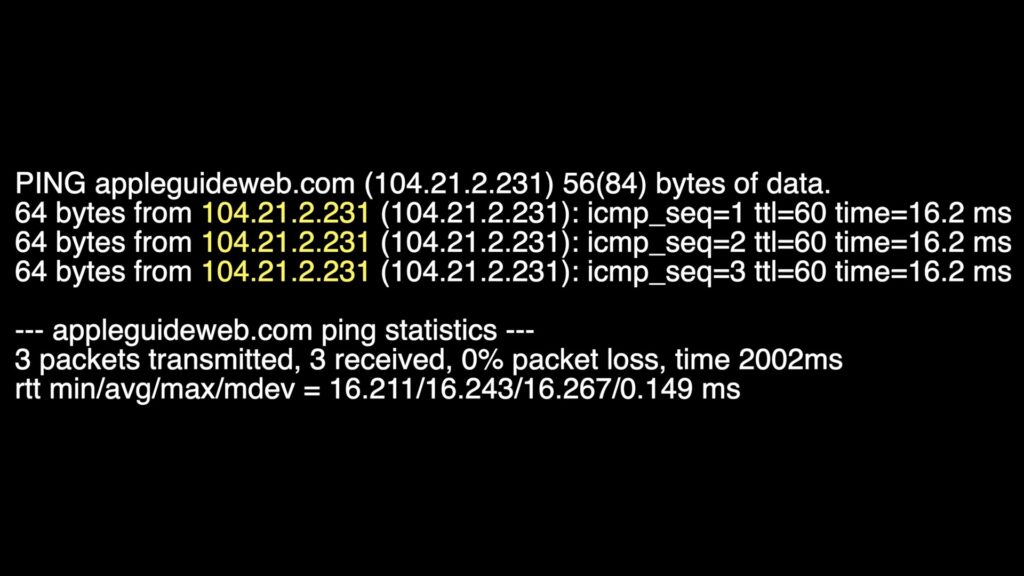
If you want to see which copy of a site you’re directed to, you can use the ping command in Command Prompt on Windows or Terminal on Mac. You can also run the ping command online at ipvoid.com/ping. I will leave a link to that site below. In the text box, enter the website you want to search. I’m going to enter AppleGuideWeb.com, for example. Then click ping lookup, and the program will send 64 bytes of data back and forth four times. When finished, it should give you a read-out of the information collected. Some of this information includes the time it took to send the data back along with the success and failure rate. However, we want to look at the IP address of the website, something like 104.21.2.231. With this address and website, you can do some more digging. For instance, if you click the IP Tools dropdown you can do a WHOIS Lookup which will tell you who owns that server. Or, you can run an IP Geolocation, which will tell you roughly where that server is.
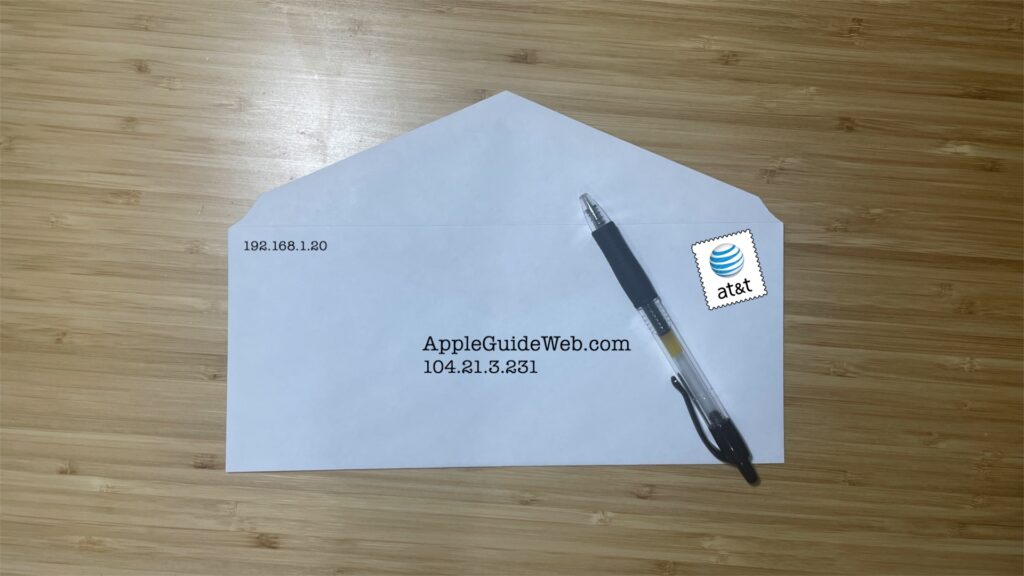
Now your computer knows who and where to send your letter. First, it’s sent to your home router where it’s assigned your network’s public IP. Think of this as your home address. Then, it’s off through the World Wide Web.
You can then track all the stops your request may take by running a traceroute command on the site I referenced earlier. This will show you all the servers it bounces off to reach its destination. You can then do an IP Geolocation to see where each of those servers are.
And that’s how the internet works. In a blink of an eye, this whole process is run, and it’s surprisingly simple. It’s like a digital version of the postal service.
Now, let’s layer one more thing on top of it, a VPN. VPNs, or virtual private networks, can be used to create gateways into different countries and mask your identity, at least if used correctly.
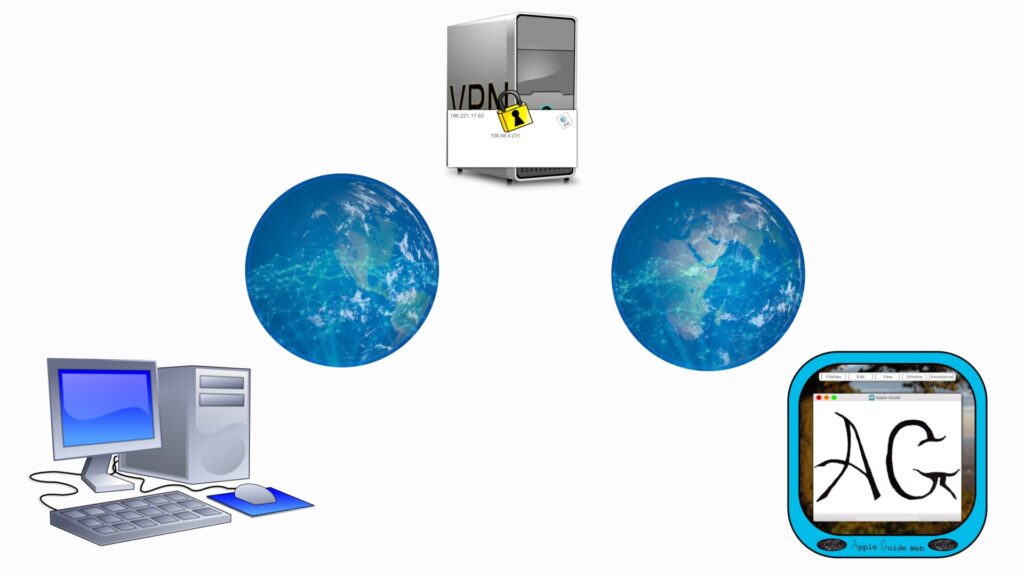
Here’s how a VPN works. Say you’re trying to go to AppleGuideWeb.com, and you have your VPN on. Instead of your request going straight to AppleGuideWeb.com, the letter is encrypted and sent to the VPN provider. Think of it this way, your envelope to AppleGuideWeb.com is in another locked envelope that is sent to the VPN provider. Once it reaches the VPN provider they open the letter that was sent to them, see your letter, and forward it to its location, in this case, AppleGuideWeb.com. Then AppleGuideWeb.com will send the information back to the VPN provider, who will repackage the letter and send it back to me. In the end, AppleGuideWeb.com may never know where I am. This is how VPNs can make you appear like your in a different city or even a different country. This also hides your internet activities from your internet provider and anyone in between.
However, there is something to keep in mind. For instance, if you sign into an online account, like your Google account, they will know exactly who you are. You also have to choose a reputable VPN provider, someone who’s not going to sort, filter, and sell the data your passing through their service.
As you can see, the internet works much like the postal service. The website is found in an address book, your request is sent, and the website replies. On the surface, it’s as easy as that. But, under the surface, it’s still a complicated and fragile network of computers. Hopefully, this has explained a lot about the mystery behind the internet.
Links
Vocab (From Wikipedia):
More on the Internet:
- Mozilla (Firefox): “How Does the Internet Work?”
- How-To-Geek: “How Does the Internet Work?”
- HP: “How Does the Internet Work: A Step-by-Step Pictorial”
- Stanford EDU: “How Does the Internet Work?“
Subscribe: Apple Podcasts | Google Podcasts | Spotify | Amazon Music | Android | Pandora | Blubrry | Email | TuneIn | RSS | More

